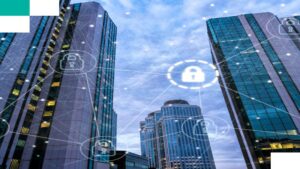We live in the digital age and with this surge in technological advancement, organisations are facing ever growing cyber threats. The complexity and rise of these threats require robust strategies and mechanisms to monitor, detect and respond to potential security risks effectively.
Secure Information and Event Management, also referred to as SIEM, has emerged as a vital solution and offers a centralised approach to gaining visibility into the activity happening within an organisation’s digital systems. By monitoring and analysing security data from a wide variety of sources, SIEM offers real-time insights when it comes to potential threats, allowing for quick and informed responses.
In this article, we take a closer look at SIEM and explore core functions, operations, challenges and benefits as well as its role in the overall cybersecurity ecosystem.
What is SIEM: Core Functions and Components
SIEM is a comprehensive cybersecurity solution that merges two primary functions: Security Information Management (SIM) and Security Event Management (SEM).
SIM focuses on the long-term storage, analysis, and reporting of security data, while SEM examines the real-time monitoring and correlation of events for immediate detection. By integrating these two core functions, SIEM provides a holistic approach to overall security management.
The key components and functions of SIEM include:
- Data Aggregation: The collection of security data from various sources such as network devices, servers, domain controllers, and more. This collection ensures a centralised repository of security-related information that facilitates a comprehensive analysis.
- Real-Time Monitoring: Continuous surveillance of the IT environment allows SIEM to detect anomalies and potential threats as they occur, enabling prompt responses to mitigate risk.
- Event Correlation: SIEM analyses patterns and relationships among different security events, which means it can identify complex attack strategies that could go unnoticed when evaluating individual events in isolation.
- Alerting and Notification: Once the system detects suspicious activities or deviations, SIEM systems generate alerts to inform security teams.
- Dashboards and Visualisation: SIEM platforms also provide intuitive dashboards that offer visual representations of security data, which helps analysts quickly understand and interpret complex information.
- Compliance Reporting: Many industries are governed by strict regulatory requirements and with this in mind, SIEM helps organisations generate detailed reports that demonstrate adherence to these standards.
By consolidating these functions, SIEM serves as a centralised hub for security operations.
How SIEM Works: From Data Collection to Threat Detection
Understanding the operational workflow of SIEM is important when it comes to appreciating its value in cybersecurity. Typically, the process works in several key stages:
- Data Collection: SIEM systems gather logs and event data from a variety of sources, including firewalls, intrusion detection systems, antivirus solutions, and more. This vast data collection ensures that all elements of the IT environment are monitored.
- Normalisation: SIEM normalises the above data into a consistent structure which enables uniform analysis and correlation.
- Correlation: SIEM uses predefined rules and algorithms to identify patterns that highlight potential security incidents.
- Analysis and Prioritisation: SIEM evaluates the correlated events, assesses their severity, and prioritises them based on the potential impact to ensure that the most critical threats are addressed promptly.
- Alerting and Response: Once a credible threat is identified, SIEM generates alerts and can initiate automated responses, such as blocking IP addresses, terminating sessions, or isolating compromised systems, to mitigate the threat.
This systematic approach empowers organisations to transition from reactive to proactive security, effectively identifying and addressing threats before they escalate.
Key Benefits of Implementing SIEM Solutions
Using a SIEM comes with numerous advantages that significantly improve an organisation’s cybersecurity framework:
- Enhanced Threat Detection: By correlating data from multiple sources, SIEM provides a comprehensive view of the security landscape, facilitating the detection of sophisticated threats that might evade standalone security tools.
- Improved Incident Response: Real-time monitoring and alerting enable security teams to respond swiftly to incidents, minimising potential damage and reducing recovery time.
- Regulatory Compliance: SIEM streamlines the process of compliance reporting by automatically generating detailed reports that align with various regulatory standards, in turn reducing the administrative burden on organisations.
- Centralised Visibility: Offering a unified view of security events across the entire IT infrastructure, SIEM enhances situational awareness and helps in identifying vulnerabilities and areas for improvement.
- Operational Efficiency: Automation of data collection, analysis, and reporting reduces the workload on security personnel, allowing them to focus on strategic initiatives and complex threat investigations.
These benefits collectively contribute to a robust security posture, empowering organisations to navigate the complex cybersecurity landscape more effectively.
SIEM vs. Other Security Technologies: A Comparative Analysis
SIEM is one component of a layered cybersecurity approach. Understanding how it compares to and complements other tools can help organisations make informed decisions.
- SIEM vs. SOAR (Security Orchestration, Automation and Response): While SIEM focuses on data aggregation, correlation, and alerting, SOAR extends this by automating responses to threats. SIEM identifies the threat; SOAR helps contain or mitigate it.
- SIEM vs. XDR (Extended Detection and Response): XDR offers integrated visibility across endpoints, networks, and cloud environments with built-in analytics and response. SIEM is more customizable and scalable across diverse sources, making it ideal for complex or hybrid environments.
- SIEM vs. IDS (Intrusion Detection Systems): IDS focuses narrowly on identifying unauthorised activity, usually at the network level. SIEM offers broader visibility, combining logs, system events, and threat intelligence to provide context and centralisation.
In short, SIEM ties together multiple data streams to give analysts the insights they need to act effectively.
The Imperative of SIEM in Modern Cybersecurity
In a world where cyber threats are increasing in frequency, sophistication, and impact, SIEM has become vital for modern businesses. From helping detect zero-day attacks to ensuring compliance and accelerating response times, SIEM platforms serve as the centre of proactive security operations.
Organisations that rely solely on isolated security tools or manual monitoring put themselves at risk of missing the bigger picture. SIEM enables visibility at scale, whether you’re defending cloud assets, on-premise infrastructure, or a hybrid environment.
At FoxTech, we help businesses assess their current cybersecurity landscape and integrate SIEM solutions tailored to their needs, whether that’s deploying a managed SIEM platform, tuning existing systems, or integrating SIEM into a broader SOC (Security Operations Centre) strategy.
Cyber threats aren’t slowing down. Now more than ever, it’s vital to stay ahead. Investing in SIEM is an investment in visibility, speed, and control over your digital future.
Ready to take control of your security data? Contact FoxTech to learn how a tailored SIEM solution can elevate your cybersecurity posture.





